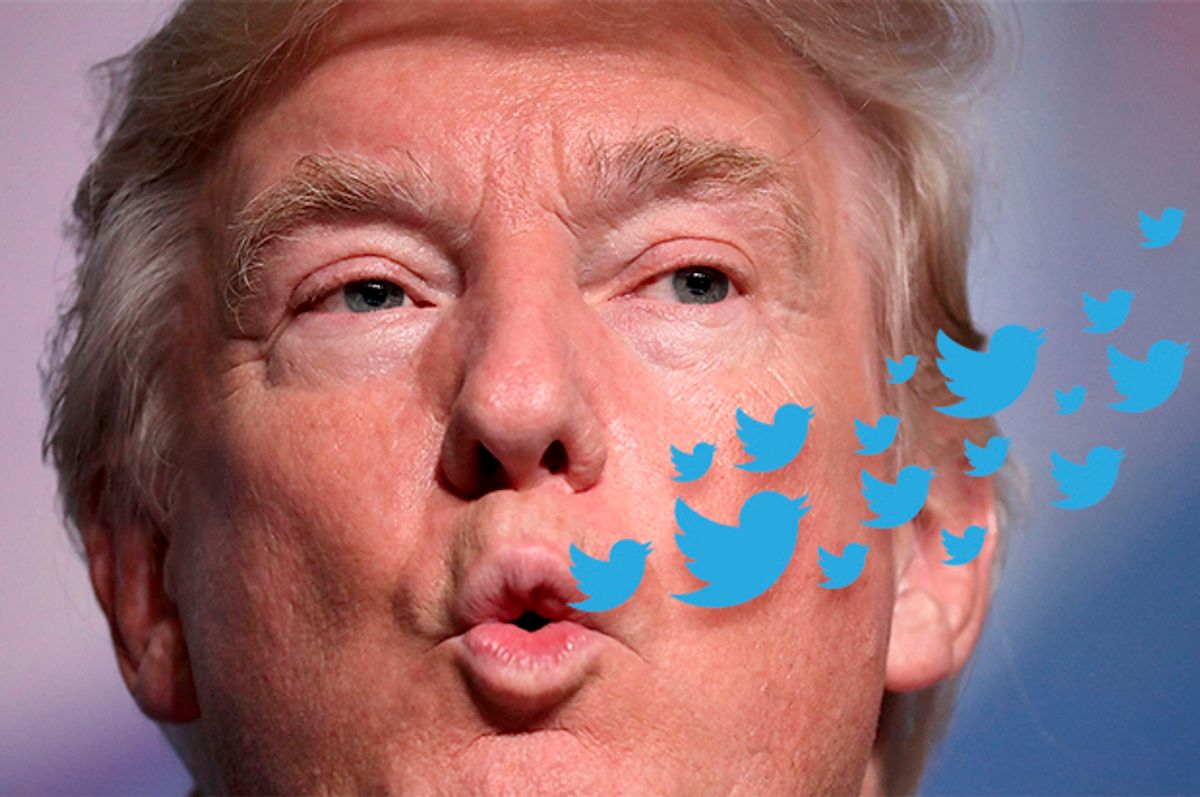President Donald Trump’s Twitter habits help shape the media and public narrative about his administration, which is why his record of retweeting and quote-tweeting accounts with suspicious bot or sock-puppet activity raises concerns.
A Media Matters study of an archive of Trump’s Twitter account revealed that over the past year, Trump has on a handful of occasions propped up praise from accounts that feature suspicious bot activity or that have since been suspended or deactivated. If he’s unintentionally promoting bots, it shows gullibility and a lack of basic due diligence on his part that is terrifying in someone as powerful as the president. And if he’s promoting such tweets intentionally, that shows how shamelessly Trump resorts to propaganda in an effort to bolster his image, set narratives, distract the public from damaging news, spin stories in his favor, and provide talking points for far-right media networks with no regard for reality.
Trump’s history of using deceit to manipulate the media and project self-advantageous messages indicates that there’s perhaps nothing accidental about his tendency to retweet bots. For three decades, starting in the 1970s, Trump infamously pretended to be a fictional publicist named John Miller and used that pseudonym to plant pro-Trump stories in the media. In June 2015, Trump paid actors to cheer for him during his announcement that he would run for president, during which he called Mexican immigrants rapists. Trump has said that he retweets for a reason and that the retweets are an endorsement “to a certain extent.” This doesn’t leave much room to question the intentionality behind his insidious strategy.
Automated social media accounts are said to have played a role in the 2016 presidential election, an issue that the Senate is still investigating. During Trump’s campaign, his digital operations — many aspects of which were manned by the recently reinstated head of Breitbart.com Steve Bannon’s Cambridge Analytica and Jared Kushner’s and Brad Parscale's Project Alamo — focused on building a loyal audience that was mostly isolated from anti-Trump narratives and was predisposed to distrusting the press and any unfavorable media coverage. For this loyal audience, Trump’s retweets of praiseful bot or sock-puppet accounts reinforce what they already feel; it's like reading the positive blurbs of a book they know they like. So they enthusiastically endorse him by retweeting them, thus becoming important magnifiers in the propaganda loop.
Even when he’s not retweeting bots, Trump has provided a platform to right-wing media trolls via his retweets, regaling them with a veneer of legitimacy that eclipses their awful records of propagating conspiracy theories, engaging in attention-grabbing stunts, and leading their followers in harassment campaigns against journalists. Others in Trump’s orbit have taken a similar approach on social media, as evidenced by Dan Scavino, Trump’s social media director, who has access to Trump’s account. Scavino has repeatedly used his own account to smear and attack Trump’s political and media opponents. In one instance, he violated the Hatch Act by engaging in political activity as a federal employee.
While Trump’s Twitter habits provide entertaining fodder and endless material for headlines, they should also give some insight into the terrifying — yet transparent — ways the administration is manipulating reality. And this manipulation is consistent with the way Trump has consistently drawn on chicanery to shape perceptions about him.



Shares